|
The Nectaris Legacy is a
comprehensive, up-to-date history of the entire Nectaris / Military
Madness series. This history is arranged chronologically,
beginning in 1989 with the original PC-Engine game and ending in 2004
with the various cellular games. Any and all information relevant
to the Nectaris series is covered in this history, so expect to
find media coverage (i.e. reviews and previews from gaming magazine,
press announcements from companies, etc.) included amongst the standard
fare (i.e. software titles, strategy guides, etc.). Folks who do not wish to browse
the Nectaris Legacy
chronologically can browse by the additional categories listed
below. Enjoy !
( 13 ) Nectaris Titles : PC-ENGINE,
TURBOGRAFX-16, PC-98,
X68000, DUO, PC
DOS / WIN 1 2,
GAMEBOY, PLAYSTATION
1 2, CELLULAR
( 02 ) Earth
Light titles : SUPER FAMICOM
1 2
( 02 ) Strategy
Guides : NECTARIS OFFICIAL GUIDE BOOK (1998) ,
NEO
NECTARIS GUIDE BOOK (1994, unconfirmed)
( 01 ) Hardware
: GB KISS LINK (an infrared modem
for Gameboy supported by Nectaris GB)
( 01 ) Demo CD's : Neo Nectaris Demo CD-ROM
(appeared on CD-ROM Capsule #4 and #6)
( 00 ) Media Coverage : VG & CE , Game
Player's , PC-Engine Fan ,
PC-Engine
Hyper Catalog (CD-ROM Capsule) #6 ,
Electronic Gaming
Monthly
|
|
Nectaris
(HuCard) originally released in Japan for NECís PC-Engine. Developed & published by Hudson Soft
(HC63O16).
As far as I can tell, Nectaris was a pretty successful title in Japan (upon its
release, at least 200,000 copies were sold). The 32 maps
featured in this release will eventually be included on each and
every Nectaris game to follow. This original campaign is often
referred to as the "Legend Story" in future installments.
NEC's PC-Engine console debuted in 1987 to compete with Nintendo's
Famicom (a.k.a. Nintendo Entertainment System). NEC's console was
very successful and developed a wide user-base. In fact, when Sega's
MegaDrive (a.k.a. Genesis) was released in 1989, a mere two years
later, the older PC-Engine and Famicom consoles continued to dominate the Japanese
market. In the United States, however, the console wars between
Nintendo, Sega and NEC had quite a different outcome ... For more
information, visit the Nectaris
/ Military Madness FAQ .
|
|
Nectaris
re-titled as Military Madness
(HuCard) and released in North America for NEC's TurboGrafx-16. Developed by Hudson Soft & published by NEC (TGX030015).
Military Madness is nearly identical to the Japanese version --
save for a few minor details. For example, 18 of the 32
stages were given new names. The revised names are unique to the TG-16 version and will not work as passwords
in any other Nectaris game. Also, the localization elaborated
(ever so slightly) upon the original Japanese story and altered the names
of some of the weapons. In case you were wondering,
"TurboGrafx-16" was the North American version of Japan's
"PC-Engine" console. NEC handled the marketing of both
consoles, but TurboGrafx-16, unlike its' counterpart in Japan, was a
veritable failure. Released in 1989, TurboGrafx-16 was simply unable to
compete with the already-wildly-popular Nintendo Entertainment System (NES)
and the soon-to-be released
Sega Genesis (which would ultimately prove to be hugely successful in the United
States -- quite unlike the fate that befell its' counterpart, the
MegaDrive, in Japan). For more information, simply go to the Military
Madness FAQ .
|
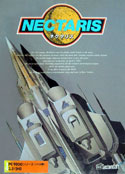 |
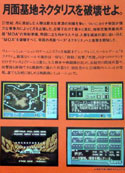 |
|
|
|
Nectaris released
in Japan for NEC's PC-9800 (PC-98) series of personal computers.
Developed by Hudson Soft & published by
SystemSoft (MS-DOS, 3.5" floppy diskette).
Judging from the screenshots on the
back
of the package, this release appears to be a faithful port of the original (it
appears nearly identical to it, with minor cosmetic
alterations in the menu interface). As far as I can tell,
SystemSoft, not Hudson, was responsible for this port. SystemSoft
also ported Nectaris to the X68000 platform (Sharp's personal computers),
probably at the same time they were working on the PC-98 version. I
would assume that the PC-98 and X68000 versions were released within close
proximity of one another. Virtually no information (English-language)
is available for this title, so please contact
me if you can provide any insight. Oh yeah, check out the bottom
panel
of the package ... you know a game is old-skool when it was released on both 5"
and 3.5" format floppy diskettes. Also, I should point
out that the PC-9800 was not IBM PC compatible. The PC-98
was actually an Intel X86 based Japanese personal computer with
original architecture (though there were some similarities to IBM
PC architecture, and it ran ported versions of MS-DOS and, later, MS
Windows). With 40% - 50% market share during its' 15-year history
(1982-1997), the PC-98 was a tremendously successful platform in Japan.
In 1997, NEC shifted its' business model and started making IBM PC
clones.
|
|
Nectaris released
in Japan for Sharp's X68000 series of personal computers.
Developed by Hudson Soft & published by
SystemSoft (MS-DOS, 5.25" floppy diskette).
SystemSoft must have brought this port out at the same time as the PC-98
version, because the instruction manual lists both versions on the cover.
If PC-98 and X68000 version of Nectaris shared the same manual, then it
is safe to assume that both ports are essentially same, save for some
aesthetic flourishes (i.e. sound cards and music, video cards and
graphics). The last time I checked, SystemSoft was still in
business and publishing software in Japan.
|
|
Neo Nectaris
released in Japan for PC Engine + CD / DUO (Super CD-Rom). Developed & published by Hudson Soft (HCD4062).
Distinguishing features of this title include: a fantastic soundtrack (in
fact, this is the only title in the entire series that doesn't simply rehash
tunes from the original game); eight new weapons that are exclusive to this
release; the inclusion of five maps designed exclusively for 2-player matches;
Martian as well as Lunar battlefields; 48 new maps (exclusive to this title) + 32 maps
from original campaign. Note: you do not play the original campaign maps in the
updated Neo Nectaris environment. When playing the original campaign, it's as if you own
the actual Japanese HuCard, since Hudson simply put the Nectaris ROM on the Neo
Nectaris disc. The same technique of putting HuCard ROMs on a CD-ROM
can be found on the "4-in-1" SCD that was a software
pack-in for the TurboDuo (the North American version of the Japanese
DUO console). NEC's DUO was a consolidation of a PC-Engine +
CD-ROM + upgraded RAM into one console. For more information,
be sure to check out the Neo
Nectaris FAQ .
|
|
This photograph suggests
that a Neo Nectaris
Guide Book was at least considered for release (though the item
pictured might be a mock-up). Whether or not the guide book was
actually published and sold has yet to be determined. I think it
is quite likely that this guide book exists, since I found this image on
the website of a Japanese publisher of guide books, mooks, etc. I
have since lost the URL to this publisher (quite infuriating), but I
will continue to search for it.
|
|
A playable Neo Nectaris demo was
provided with two different issues of the PC-Engine Hyper Catalog (CD-ROM
Capsule #4 and #6). They were, in fact, the exact same demo
(allowing you to play the first four maps)... or were they? The
release dates are so far apart, I have to wonder... Go here
for more info.
|
|
Commentary coming soon .... until then,
check out the full scoop on this
page.
|
|
Nectaris released in GERMANY (PC DOS / Windows 95, floppy diskette).
Licensed & published by Sunflowers GmbH (Germany).
In other sections of this site, I have argued that 1994's Neo Nectaris is
the "oddball" title whose peculiarities make it stand out from
the rest of the series. While I still maintain that position, I have
to say that this German version of Nectaris is also an "oddball"
that really stands out from the rest of the series. Actually, to be
more precise, the German version of Nectaris is the bastard child
of the series. Whereas Neo Nectaris was a true sequel to
1989's Nectaris (by maintaining fundamental elements of the original
game), the German version re-formulates and re-mixes key elements of the
game: (1) combat is no longer limited to the lunar landscape -- two new
planets have been added to the Nectaris universe, thereby allowing the introduction of new weapons (i.e. naval
craft and helicopters) and combat that you would never find on a lunar
battlefield, and (2) a complete aesthetic overhaul that replaces the drab weapons
and dreary atmosphere of the Moon with re-styled "cute" weapons set
atop a colorful, vibrant topography.
These alterations to the classic Nectaris formula are easier to understand
when you look at the production history of the game. Unlike the
other titles in the series (which were developed by Hudson Soft of Japan),
this PC version was developed (level design, artwork, programming, etc.) by a German
team... although Hudson Soft (Japan) is credited with some
of the programming / computer intelligence (for the core game engine, I
assume) and Hudson Soft (Europe) is credited as one of the title's producers.
The German development team clearly wanted to do more than simply port the
original Nectaris, they wanted to reinvigorate the original game and make it
seem fresh and new. As a result, this installment has a somewhat different
look and feel when compared to the rest of the series (check out
screenshot
1 and screenshot
2 to see how maps and weapons have been stylized in this version) ... plus, it has the most diverse gameplay with 3 worlds, 98 maps,
and many unique units you won't find in other Nectaris
titles, such as helicopters, paratroopers, bunkers, jet-pack infantry, submarines, sea mines, and countless watercraft. Naval warfare is atypical of the Nectaris series. You
begin your campaign on the Moon (inexplicably referred to as
"Triton" in this version) playing the original 32 maps, then the
battle shifts to another planet -- Romulous -- for the second campaign
(32 maps), before ending up on planet Pacifica for the final 36 maps.
I appreciate the fresh approach
taken by the German developers (and I am already on record as being a fan
of "cute" strategy games like Earth Light).
|
|
Nectaris (port of
original 1989 PC-Engine version) released in Japan as FREEWARE for personal computers
( PC
Windows 95 ). Unit Edit version
07.02.97. PC version 11.05.1997.
This PC port is identical to PC-Engine version, except for the fact
that it can be played with a mouse and includes a map editor! The freeware
was available as a free download from the Hudson Soft (Japan) website and
is still available from Vector's
Software Library .
"Unit Edit" is the Nectaris map editor... did the map editor
predate the actual game by four months? Perhaps the map editor was released
as part of Hudson's "design-a-map" contest held in 1997?
(Note: 44 winning entries from this contest were included on the PlayStation and Gameboy
versions of Nectaris released in 1998).
|
|
Nectaris GB
for Gameboy (Japan) (cartridge).
Developed & published by Hudson Soft (DMG-AN5J-JPN).
An aesthetically-challenged update of the original PC-Engine Nectaris, this game features simplistic,
tiled maps resembling those found in the "Gameboy Wars"
series. To offset this disappointment, a map editor is
included. Better still, you can share your creations with fellow
Gameboy owners with a unique feature called "GB KISS". Nectaris GB featured an infrared
communication port (built-into the Gameboy cartridge itself) that allowed you to
send & receive game data (i.e. game saves and maps created with the map editor) with anyone else
who had a copy of Nectaris GB. This feature (sharing data via IR
ports built-into the cartridges themselves) was dubbed "GB KISS" by
Hudson. Nectaris GB includes 108 total maps: original 1989
campaign (32 maps) + GB
exclusive campaign (32 maps) + 44 "contest winner maps."
For more information, be sure to check out the Nectaris
GB FAQ . Could it get any better? Yes, believe it or not, it gets even
better ...
|
|
GB KISS LINK Infrared Modem for Gameboy (Japan).
Developed & distributed by Hudson Soft (HC-749).
Nectaris GB was one of the few Gameboy games that
demonstrated the full capabilities of the GB
KISS LINK infrared modem -- one of the most intriguing peripherals
ever released for Nintendo's Gameboy. Available exclusively from Hudson of
Japan, GB KISS LINK was an
infrared modem that enabled folks to connect a Gameboy (with a
GB KISS cartridge installed) to a personal computer (running Windows
95). "Why would I want to do that?", you may
rightfully ask. "To share game data between the internet,
your personal computer and your Gameboy", Hudson would reply. GB KISS LINK enabled gamers to download new, exclusive
game data from Hudson's website (for example, brand new maps for
Nectaris GB were available for download). Here is how it
worked: First, game data was downloaded from a dedicated website onto
a PC's
harddrive.
Then, using GB KISS LINK, this data could be transferred
directly (via infrared ports) onto a Nectaris
GB cartridge. Once the downloaded file was stored on the
cartridge, you could send it to a friend's Nectaris GB cart by using
GB KISS (no modem required). The modem did provide some other
neat functions (i.e. it allowed you to archive / back-up your game
saves on a PC harddrive), but other features have yet to be
confirmed. For more information, check out the two-page GB
KISS & GB KISS LINK mini-FAQ .
|
|
Nectaris
for
PlayStation (Japan). Developed & published by Hudson Soft (SLPS-01245).
The PlayStation update of Nectaris was released at the same time as Nectaris GB (Gameboy)
and is very similar to it, which is somewhat surprising considering the hardware gap
between Gameboy and PlayStation. The PlayStation update of Nectaris
includes a map editor (virtually identical to the one provided in Nectaris
GB)
and 108 total maps: original 1989 campagin (32 maps) + PSX
exclusive campaign (32 maps) + 44 "contest winner
maps". Yes, the 44 "contest winner" maps are
identical to those found on the Gameboy title. For more
information, check out the Nectaris
PlayStation FAQ .
|
|
Published by Famitsu (ASCII
/ Aspect) in 1998, this guidebook (256 pages in length) was a companion to the 1998 PlayStation version of Nectaris
and includes: (1) an illustrated weapon guide, (2)
a strategy guide for all 108
maps as well as (3) a detailed synopsis of the
storyline. This guide book is a novelty of sorts since it is the only
example of Nectaris "merchandising" I have encountered (outside of software, of
course) ... UPDATE: There is evidence of a Neo Nectaris Guide Book as
well. For more information, including scans of the original artwork
featured in the guide book, please visit Nectaris
Official Guide Book FAQ .
|
|
Nectaris: Military Madness
for PlayStation (North America). Developed by Hudson Soft and published by Jaleco (SLUS-00764).
This was the last Nectaris game to appear on a home console.
It is identical to the Japanese PSX version. Jaleco decdied to re-title the
game for North American release
-- to reveal its lineage to 1989's "Military Madness" on the
TurboGrafx-16, no doubt -- though few gamers would have made the
connection to the older game since TurboGrafx-16 and its' software were
relatively unknown in 1989, let alone a decade later. Indeed, we were lucky that Jaleco
released this in the
States. For more information, simply peruse the Nectaris
: Military Madness FAQ .
|
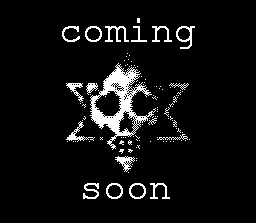 |
 |
 |
|
|
| 2003 i-Mode
(NTT / DoCoMo) |
2003 AU /
KDDI |
2004
Vodafone |
|
|
Nectaris
is rehashed once more, this time for cell-phone
gamers and on several different formats: i-mode (NTT/DoCoMo), AU/KDDI,
and most recently, Vodafone.
Hudson Soft recycled many titles in its back-catalogue for cellular
gaming, including a
significant number of other hits (and misses) from the PC-Engine
library. In 2005 Military Madness became available on North American carriers. Visit Hudson's Official Mobile site.
Also, here is a review of the North American version, courtesy of Matt, who posted this on the magicengine and pcenginefx forums. Thank you Matt for taking the time to do this!
REVIEW: Military Madness for Cellular / Mobile phone platforms
Updated 7/7/2006, MattGyver
Alrighty, my meaningless report is in for Military Madness on mobile devices (maybe not Verizon though - looks like that one is actually a little different/better, but I have yet to verify)
I bought the game for $4.99 from Cingular for my Sony Ericsson W600i. The overall experience was good, the game is very stable, and I didn't run into any bugs. Although to fit onto a mobile device, it was definitely altered. However, for only $5, I feel it was worth it. With that said, the following is a comparison of the mobile Military Madness game compared to the TG16 version.
Graphics:
------------------------------------------------
1) The maps look great, everything seems to have been copied exactly.
2) The units on the map look good as well. However, when they move, there is no animation, they just jump from hex to hex.
3) The hex cursor is a little smaller, and the hex grid (when displayed) feels a little tight. On the TG16 each grid hex was right next to each other with only a pixel or two between them. On the mobile version, each place on the grid is far apart, and much smaller. Just strange I guess figuring the rest of the map is spot on.
4) Battle animations only show explosions. Units do not roll onto the battlefield, they don't position themselves, raise their turrets, fly in, whatever, they just appear - you hear a shooting noise - then they explode.
5) Units fighting each other appear on the same plane - aircraft are shown at the same level as tanks. If you just glance at the screen, you may think your Eagles are some kind of tank if you didn't know better.
6) Factory captured screens are not animated, and they are very tiny - taking up the center of the mobile screen, and no bigger than 80 x 50 pixels (just a guess)
7) There is no overview map of the moon when moving from level to level.
8) The intro screen is pretty much the same, just with modified menus and such to fit a mobile device.
9) On each level, there is no side info panel showing the units on the map, the name of the map, and so on. This however is available from an options menu during play.
10) When engaging enemy forces, the surround and terrrain effect hexes at the bottom of the battle window do not 'add themselves up' or indicate any bonuses to attack through a quick animation. These bonuses are still there, but they are already taken into account and displayed prior to the battle display opening up. This is one of my favorite things removed on the mobile version. I love surrounding the opponent on either side, then laughing when his defense goes through the floor, and my attack goes through the roof. It warms my heart to rip apart a full company of 8 Giants with nothing more than a Rabbit and Eagle.
11) There is no after battle graph, only two lines of text indicating how many units on each team were destroyed.
12) 'Titans' have been renamed to 'Monsters', and the 'Falcon' is now the 'Falco'. After doing a little research I found these unit names are actually the Japanese names of those same units from the PC Engine / Duo cd game Neo Nectaris. It makes me wonder why they would only name those two units according to the Japanese translation, and leave everything else alone?
13) The intro is pretty much the same - uses the same small framed graphics and story.
14) The tutorial is a really stripped down version covering only the highlights, and it is mostly text with no user interaction required.
Sound:
------------------------------------------------
1) The music, though heavily modified, is basically the same. The instrument set used for the MIDI hasn't been messed with too much, and that "wah-wah-wah-wah" noise when you end your turn is, in spirit, close to the original. You'd have to hear it to know what I mean.
2) Sound effects have been cut back a little, but nothing is completely missing. Honestly, I turned my sound off after stage 3, ad only checked it occasionally.
Gameplay and Opponent AI:
------------------------------------------------
This was my favorite part - trying to figure out how the computer thinks. The TG16 version was actually tough in spots, and I don't know if there are more than a couple ways to guarantee victory on any particular level - especially after stage 12. Overall, I would rate the computer on the mobile version a 2/10. It was very stupid. The TG16 version would probably be around a 7/10 (I can give you my synopsis on how it could be improved... but the CPU is already pretty evil). The poor mobile AI didn't make it a lot less fun though, but it certainly was a dissapointment on the later levels when my hard learned strategies didn't matter. I feel it doesn't have nearly the replay value as the TG16 version. Read on...
1) The mobile version does not allow password entry. You must reach any particular level by playing through to access it from the main menu.
2) You can save at ANY point and continue just as easily. There is only 1 save file.
3) It is 1 player only. You can only play as the Allies (blue team).
4) The computer will not explore the map or establish any sort of planned group offensive/defensive line. This will become apparent on Stage 4. The exception is with foot units (Charlies and Kilroys) and transport vehicles. They seem pre-programmed to acquire factories and generally travel to points of interest.
5) Any Axis (green team) offensive action or movement will ONLY be triggered by a blue unit being in range. Since aircraft have the most range, they alone tend to go after you. Slow moving tanks won't budge for the entire level unless you are careless enough to come within their range. If you completely move your units out of range of any enemy units, you can expect to see lots of "End Turns" without a single Axis unit moving. You can basically load up a Pelican with some Charlies, fly outside of the enemy units' range, and swoop in to their base for an easy and un-eventful capture. It's more like a stealth game or something - if they can't see you, they won't budge.
Try this on Stage 1, pull all your units back to your base and end your turn. The Axis will ONLY move their Charlies. Since you are out of the tank's attack range, they won't budge. You can sit there forever and they will not try to get you. They will capture your base if you are not sitting on it though.
6) No attempt is made to protect the Axis base. If the Allies are within capturing distance, nearby Axis units will not move to protect the base or squat on it.
7) The computer will typically not use gang-up tactics to quickly eliminate any one Allied unit. The most I have ever been attacked with were 2 Hunters, and they did not go for the surround attack bonus.
8) All Axis indirect attackers (Atlas, Hadrian, Octopus, Lynx, Hawkeye) will NEVER attack. Ever. Never Ever. Never Never Ever. You can walk through a dense forest of these and they will just sit there and stare. Not once was I the target of an indirect attack.
9) Since the Axis indirect attack units will never fire at you, this also means you are never really within their attack range, therefore - these units will typically never move.
10) The computer will never directly load a transport vehicle with a unit in a factory. For instance; after unloading a Pelican from their factory, the next unit to be unloaded is an Atlas. They will not load the Atlas into the Pelican. Instead, it will be unloaded into the next available spot. The same goes for Triggers (land mines), ground units, foot units, and so on. Nothing will ever get loaded into a transport vehicle fresh out of a factory.
11) Transport vehicles typically take a few turns to successfully get loaded. The computer will tend to move their Charlies a few times independantly from the Mules, then after a couple turns of dancing around, they will finally load the Mules. Just in time for me to blow them away with some Eagles I had nearby. It's strange - and the final result only put them a few hexes from where they started.
12) The only levels in this game are the original 16. There is no second moon.
That's about it! Pretty exhaustive I think. Please let me know if you have any questions or comments - especially if you have played the Verizon version of the game. I am interested to see how that one differs. Nothing beats the TG16 classic though!
Matt
Also, here is IGN's review of the cellular game (8.8/10).
|
|
Earth Light for Super Famicom
(Japan). Developed & published by Hudson Soft (SHVC-H3).
Earth Light is not a direct sequel to Nectaris, but there
are many similarities in the play mechanics and gameplay (not surprising
since it was written by the
same programmer at Hudson Soft who did Nectaris). [source: Lee Pappas
]
Essentially, Earth Light is a reworking of the Nectaris game
engine. Earth Light possesses similar mechanics, gameplay, and
addictiveness of Nectaris, but the battles have been transplanted into space with a
neo-medieval twist on the gameplay (i.e. MECHs are armed with both
swords and guns; bases resemble hi-tech "castles", etc.). The
hand-to-hand melees, by the way, are an interesting extension of the Nectaris
battle system. Aesthetically, the military units, maps, and battle scenes in
Earth
Light are far more colorful, "cutesy", and
"cartoon-like" than the wonderfully drab & dreary atmosphere depicted in the Nectaris series. For more
information, visit the Earth
Light FAQ.
|
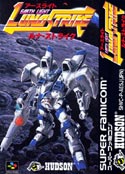 |
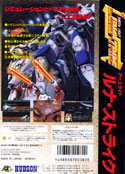 |
|
|
|
Earth Light II: Luna Strike for Super
Famicom (Japan).
Developed & published by Hudson Soft (SHVC-AE5J).
Luna Strike is an even further departure from the classic Nectaris formula.
In fact, Luna Strike is closer to the RPG/strategy genre: for each map, you
select one of several "commanders" -- each with specific
attributes -- to lead
your troops into battle. Sounds promising, but the graphics during
gameplay are horrid; the control is cumbersome; and the gameplay is
tedious. As a result, Luna Strike lacks the
atmosphere, ease-of-use, and addictiveness of the Nectaris series.
The MECHs featured in this game are uninspired trolls; the
battlefields are bland, muddy messes; the soundtrack is not
nearly as engrossing as the original game, etc. Yet, ironically,
the cinema scenes and artwork featured on the package and in the
game's instruction manual are absolutely gorgeous -- a sad testament to the sheer
crappiness of the actual gameplay of this sequel. But perhaps "sequel"
isn't even an appropriate term, because Luna Strike is so dissimilar
to Earth Light / Nectaris that I have to wonder if it even shares the
same game engine (I doubt it). In fact, I doubt that Luna
Strike was developed by the same team of designers / programmers
who brought us Earth Light / Nectaris. I suspect that
Hudson was well aware that Luna Strike was crappy...so, in an
effort to make this game as appealing as possible, they made damn
sure that the cover art and cinema scenes were alluring. I
don't know when I will get a chance to work on it further, but here is a
preliminary page for the Earth
Light: Luna Strike FAQ . You'll find a handful of scans on
the page, but not much else.
Of the two games, I recommend the original Earth Light (1992) since it borrows so heavily
from the Nectaris series and, as a result, it is much more fun to play
than Luna Strike. -
top -
|
|